Arcellinida Kent 1880
Testate, inside an organic or mineral extracellular test of either self-secreted elements (calcareous, siliceous, or chitinoid) or recycled mineral or diatom particles bound together, with a single main opening.
Testate, inside an organic or mineral extracellular test of either self-secreted elements (calcareous, siliceous, or chitinoid) or recycled mineral or diatom particles bound together, with a single main opening.
1. Arcellidae Ehrenberg 1830, emend. Deflandre 1953
Test rigid, transparent, colourless, yellow or brownish, composed of organic building units, areolar, smooth; aperture round.
1.1. Arcella Ehrenberg 1832
Test more or less circular, aperture central, invaginated, in many species surrounded by a tube or a circle of pores.

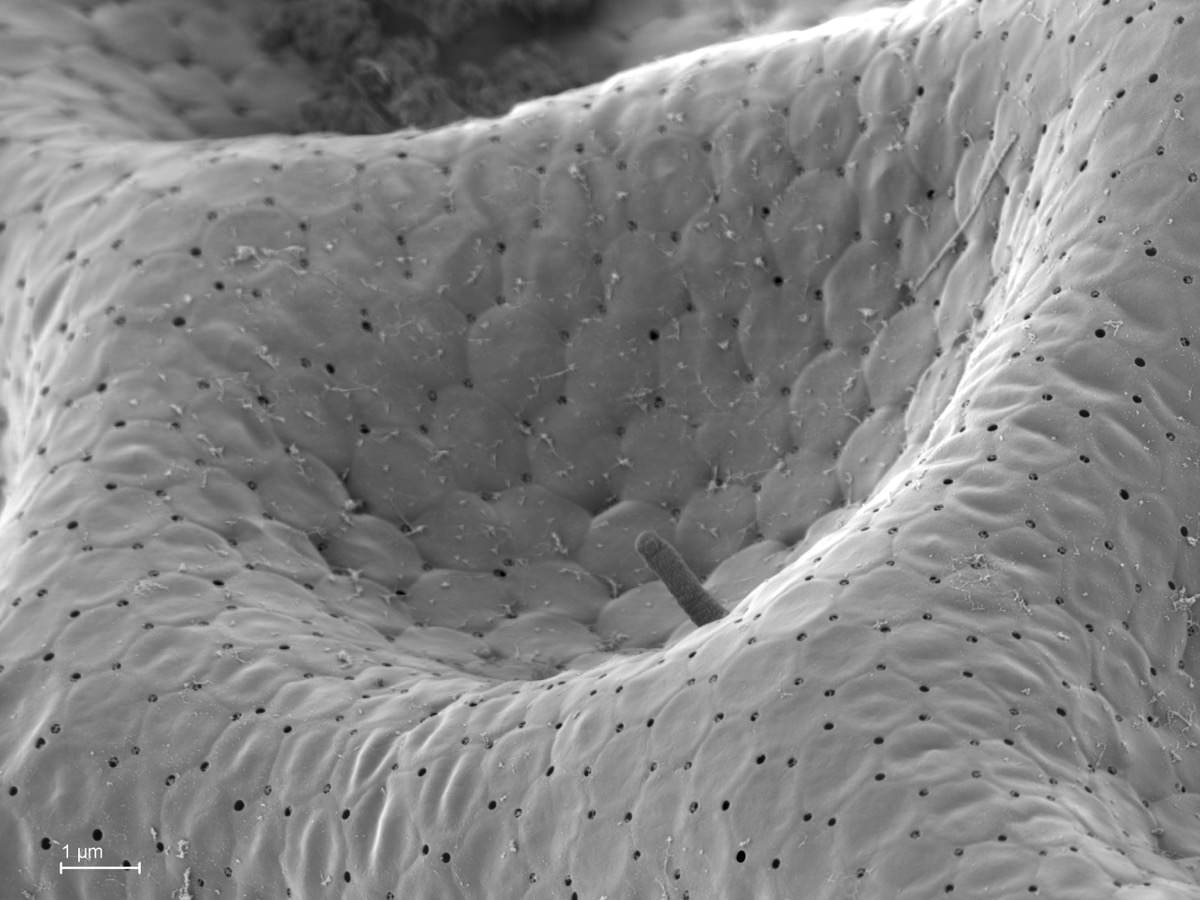
Arcella sp.


Arcella gibbosa Penard 1890

Arcella sp. aperture
2. Centropyxidae Jung 1942
Aperture eccentric; often invaginated.
2.1. Centropyxis Stein 1857


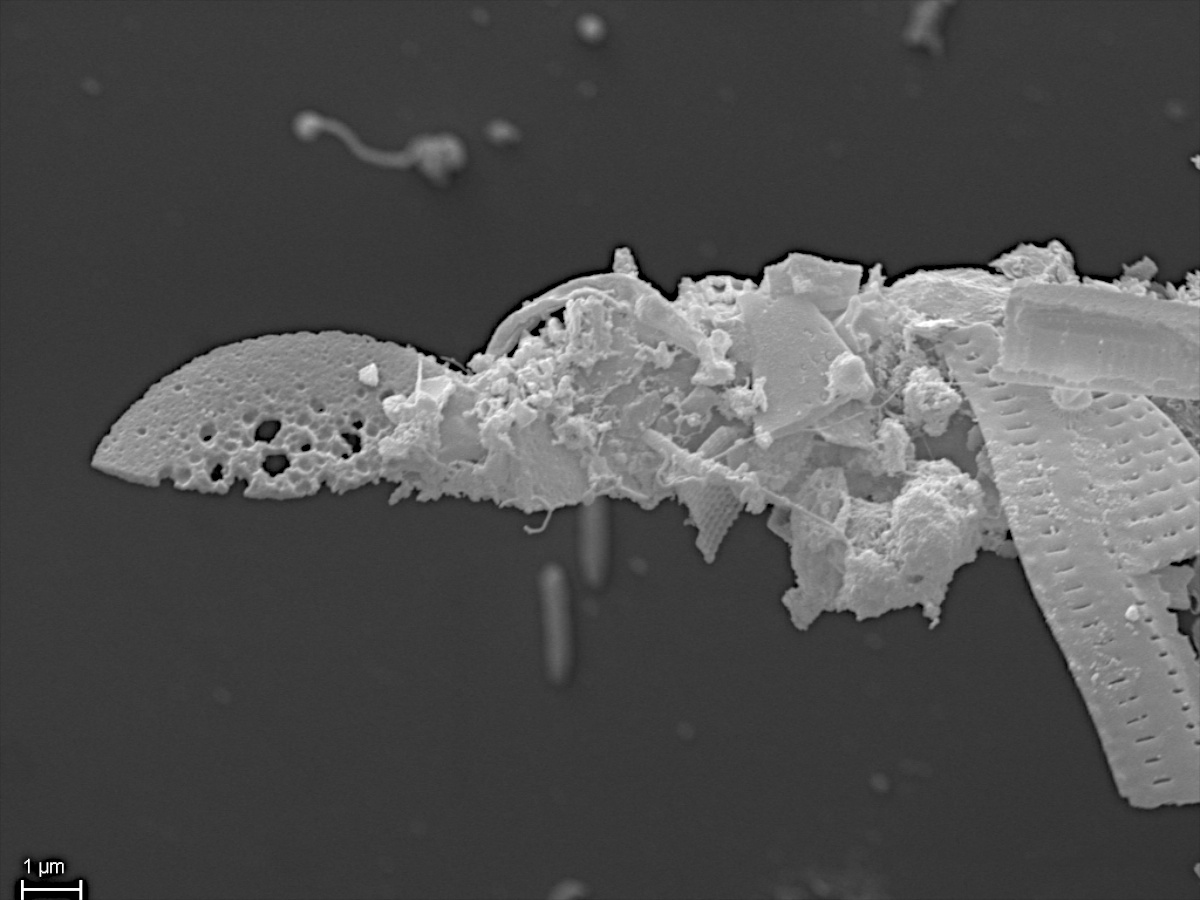
Centropyxis aculeata Ehrenberg, 1838
A sharp xenosome is inserted into the tip of the horns.
A sharp xenosome is inserted into the tip of the horns.
3. Hyalospheniidae Schulze 1877, emend. Kosakyan and Lara 2012
Test rigid, chitinoid, clear, oval- or flask-shaped, aperture terminal bordered with an organic collar. Test is either a completely self-secreted organic matrix or with additional self-secreted silicious plates or with recycled shell plates of small euglyphids or other similar material such as diatom frustules.
3.1. Hyalosphenia Stein 1859
Species with compressed, chitinoid transparent test with no foreign material; pseudostome often with a thickened lip.
Species with compressed, chitinoid transparent test with no foreign material; pseudostome often with a thickened lip.



Hyalosphenia elegans Leidy 1874



Hyalosphenia papilio Leidy 1874
Common in wet sphagnum; always with Chlorella symbionts.
Common in wet sphagnum; always with Chlorella symbionts.

Hyalosphenia cuneata Stein 1857
3.2. Nebela Leidy 1874 emend. Kosakyan, Lahr, Mulot, Meisterfeld, Mitchell and Lara 2016
Test rounded, ovoid-pyriform, or wide-pyriform, rarely with a keel (partial or complete) or other lateral expansions, with or without wavy lateral margins. Pseudostome ranging from linear to strongly curved, bordered by a thin organic lip (rim, collar or fringe). Test hyaline or slightly yellowish, reinforced with circular to elongated shell plates apparently recycled mostly from euglyphid testate amoeba prey, sometimes also including fragments of diatom frustules or other small mineral elements.
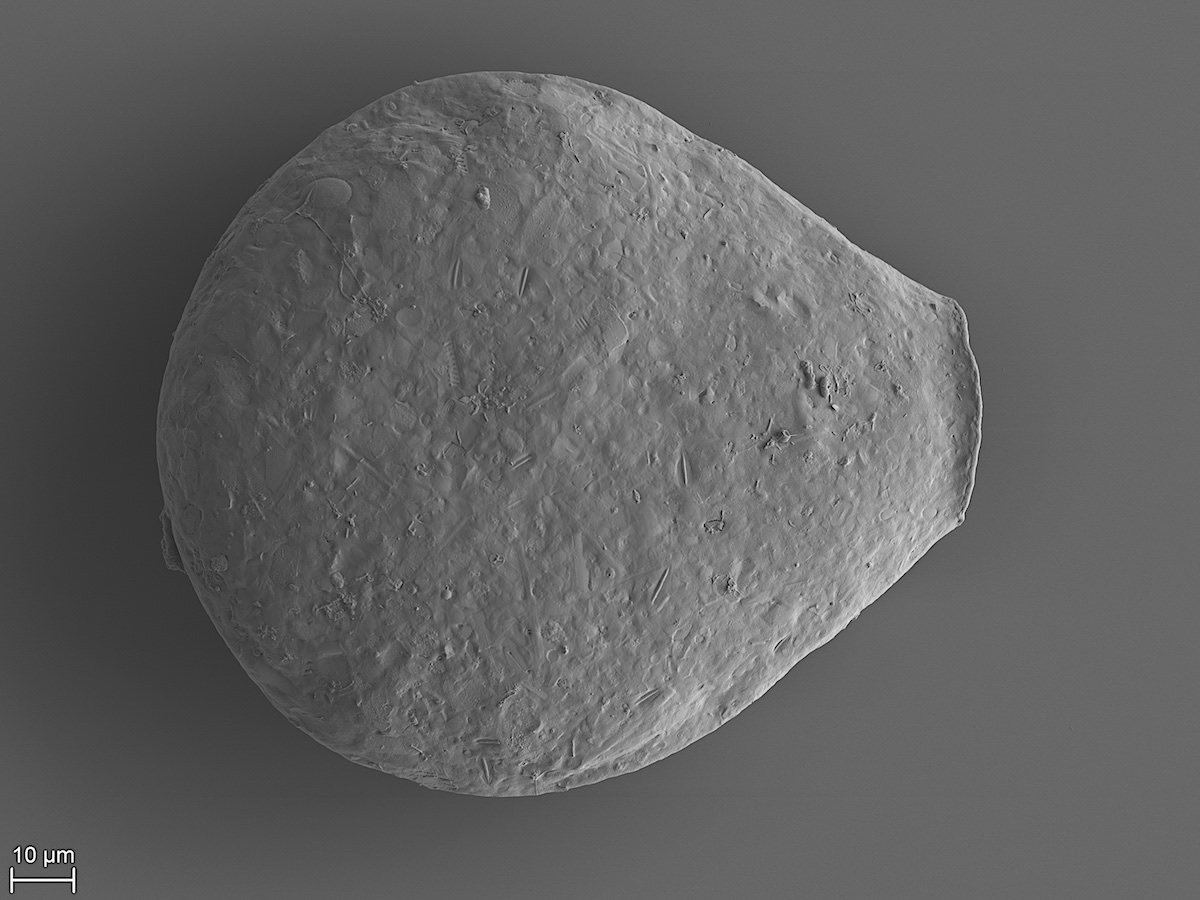
Nebela sp.
3.3. Gibbocarina Kosakyan, Lahr, Mulot, Meisterfeld, Mitchell and Lara 2016
Test elongated-pyriform, with the lateral sides tapering towards the pseudostome, with a hollow tuberous keel surrounding the entire posterior end of the test. Test hyaline or slightly yellowish, composed of circular to elongated shell plates, probably recycled from euglyphid testate amoeba prey.

Gibbocarina galeata (Penard 1890) Kosakyan, Lahr, Mulot, Meisterfeld, Mitchell and Lara 2016, formerly Nebela galeata
3.4. Longinebela Kosakyan, Lahr, Mulot, Meisterfeld, Mitchell and Lara 2016
Test elongated-pyriform, with a distinct neck, lateral margins (that can be straight or wavy) tapering towards the aperture. Test hyaline or slightly yellowish, composed of circular to elongated shell plates probably recycled from euglyphid testate amoeba prey.

Longinebela tubulosa (Penard 1902) Kosakyan, Lahr, Mulot, Meisterfeld, Mitchell and Lara 2016, formerly Nebela tubulosa

Longinebela tubulosa, test details with recycled euglyphid shell plates.
3.5. Quadrulella (Wallich 1863) Cockerell 1909 emend. Kosakyan, Lahr, Mulot, Meisterfeld, Mitchell and Lara 2016
Test pyriform, or elongated-pyriform, with the lateral sides tapering towards the pseudostome, with or without distinct neck. Always laterally compressed, elliptical in cross section. Pseudostome ranging from linear to strongly curved, with or without thickened organic lip. Test hyaline, composed of self-secreted square plates.

Quadrulella variabilis Kosakyan, Lahr, Mulot, Meisterfeld, Mitchell and Lara 2016
3.6.Padaungiella Lara and Todorov 2012
Test lageniform with a distinct elongated neck. Laterally compressed with the exception of two species (P. nebeloides and P. pulcherrima, which have a circular closs section). The pseudostome ranges from linear to strongly curved, with or without thickened organic lip. Test hyaline or slightly yellowish-brownish, composed of circular to elongated test plates predated from small euglyphids. One notable exception is N. nebeloides that can use mineral particles and produce a test somewhat similar to that of the genus Difflugia.



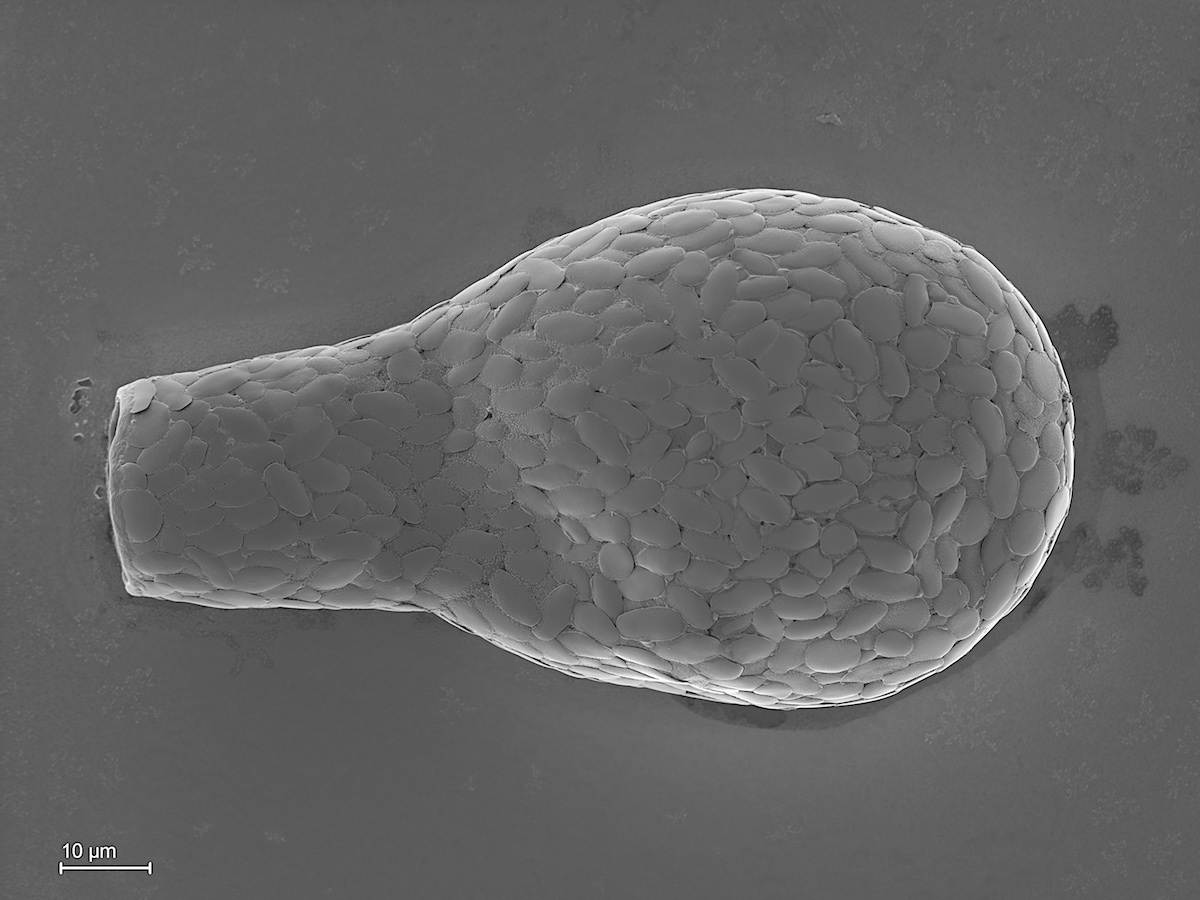
Padaungiella lageniformis (Penard 1890) Lara and Todorov 2012, formerly Nebela lageniformis
4. Netzeliidae Kosakyan, Lahr, Mulot, Meisterfeld, Mitchell and Lara 2016
Test is rounded, with radial symmetry aperture is rounded and lobed.
4.1. Netzelia Ogden 1979
Aperture lobed.



Netzelia tuberculata Wallich 1864


Netzelia oviformis (Cash 1909) Ogden 1979
5. Microchlamyidae Ogden 1985, emend. Kudryavtsev and Hausmann 2007
Test proteinaceous, rigid, finely areolate. Cytoplasm either enclosed in a separate membrane sac with single aperture, attached to the main test, (Microchlamys) or the peripheral part of the test membranous with a single aperture, in which case there is no separate membrane sac between the cell body and test (Spumochlamys). Nucleus central. Sometimes with cysts. TEM images are necessary to distinguish the genera.

Microchlamyidae sp.

Microchlamyidae sp. cyst

Spumochlamys bryora Kudryavtsev, Pawlowski & Hausmann 2009
6. Paraquadrulidae Deflandre 1953
Lobose testate amoebae with shell completely composed of endogenously formed rectangular calcite plates embedded in a sheet-like organic cement.
6.1. Paraquadrula Deflandre 1932

Paraquadrula sp.
7. Trigonopyxidae Loeblich and Tappan 1964
Aperture centric; often invaginated.
7.1. Trigonopyxis Penard 1912
Aperture irregular, frequently triangular, always surrounded by a ring of organic cement.


Trigonopyxis arcula (Leidy 1879) Penard 1912
Arcellinida genera incertae sedis
Argynnia Vucetich 1974 (incertae sedis)
Test compressed, aperture surrounded with siliceous plates. Shell greyish, composed of various euglyphid plates, mixed with diatom fragments and mineral particles porous cement. The structure of the test is intermediate between Nebela and Difflugia. Nucleus ovular.

Argynnia dentistoma Penard, 1890
Difflugia Leclerc 1815 (incertae sedis)
Test composed of agglutinated mineral particles or diatom frustules in a structured or sheet-like organic cement. Aperture terminal; of variable shape.


Difflugia sp.

Difflugia organic cement
Heleopera Leidy 1879 (incertae sedis)
Test composed of collected euglyphid body plates, mineral particles, or diatoms; laterally compressed. Aperture terminal, lenticular or slit-like.


Heleopera sphagni Leidy 1874
Common in wet sphagnum; always with Chlorella symbionts.
Common in wet sphagnum; always with Chlorella symbionts.
Lesquereusia Schlumberger 1845 (incertae sedis)
Test composed of endogenous siliceous rods, diatom frustules or collected mineral particles or a mixture of both. Idiosomes and xenosomes agglutinated by a mesh-like organic cement. Test with attached neck.



Lesquereusia spiralis Ehrenberg 1840
Pyxidicula Ehrenberg 1838 (incertae sedis)
Shell bowl-shaped, rigid, areolate, organic. Aperture almost as wide as the cell.
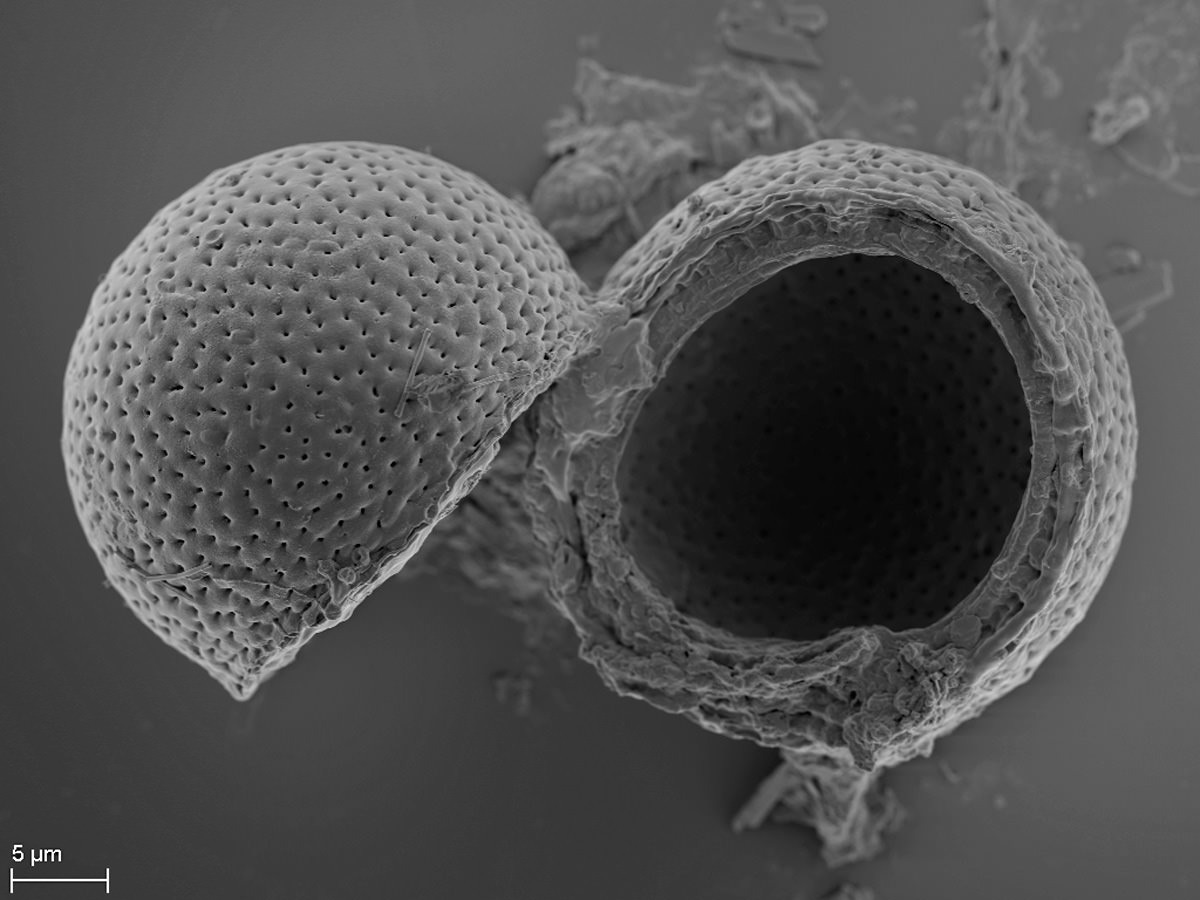
Pyxidicula patens Claparède and Lachman 1858